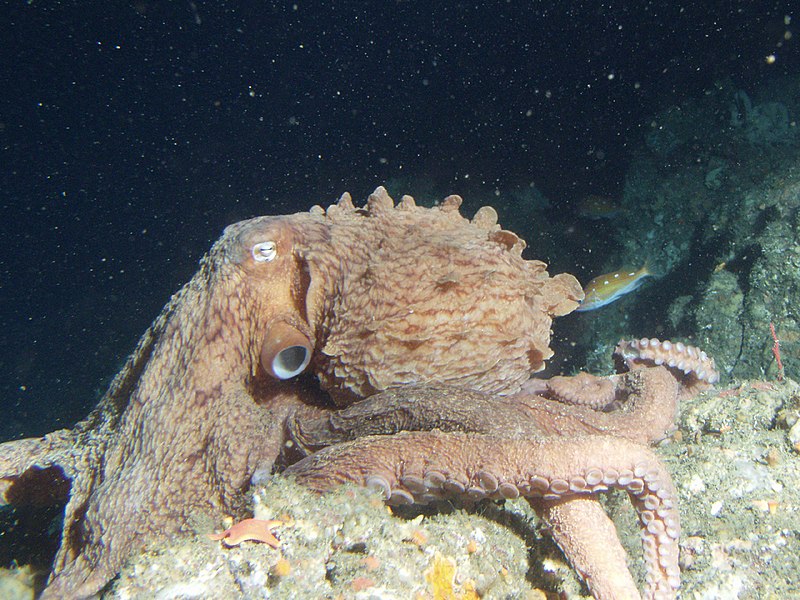 |
| Photo courtesy of AES Brittany |
Hello Explorers! It's time for the Critter of the Week! Now, I have noticed there is a slight biased toward the recognizable critters thus far.
So, this week, it is time to bring you all something that may blow your mind! Instead of ju...st one critter, this name refers to a phylogenetic class that includes over 2300 species! I present, the humble sea squirt. Yes, that's right, the Sea Squirt. "Sea Squirt" is a common name that refers to the class Ascidiacea, which belongs to the subphylum tunicata, otherwise known as the tunicates.
Sea squirts are filter-feeding marine invertebrates that basically look like small sacs. As adults, they stick to a rock and prefer to remain attached the rest of their lives. The reason these animals are called sea squirts is because on the upper part of these sac like animals are two siphons. If one of these animals happen to be removed from the water, it will squirt water violently from these siphons. At first glance, these animals seem to be simplistic, perhaps pretty to look at, but nothing too special. However, there is something very special about sea squirts and the rest of the tunicates...
In the phylogenetic tree, which is the term applied to tracing the evolutionary relations of life (Kingdom, phylum, class, order, family, genus, species), tunicates and "vertebrata" (which include fish, amphibians, reptiles, birds and mammals) are sister subphylum. This means that tunicata and vertebrata shared a common ancestor from which the two subphyla split. Not only that, but Tunicates are closer related to vertebrata than to any invertebrate group. So think about that next time you see a sea squirt, and be sure to read more about them here:
So, this week, it is time to bring you all something that may blow your mind! Instead of ju...st one critter, this name refers to a phylogenetic class that includes over 2300 species! I present, the humble sea squirt. Yes, that's right, the Sea Squirt. "Sea Squirt" is a common name that refers to the class Ascidiacea, which belongs to the subphylum tunicata, otherwise known as the tunicates.
Sea squirts are filter-feeding marine invertebrates that basically look like small sacs. As adults, they stick to a rock and prefer to remain attached the rest of their lives. The reason these animals are called sea squirts is because on the upper part of these sac like animals are two siphons. If one of these animals happen to be removed from the water, it will squirt water violently from these siphons. At first glance, these animals seem to be simplistic, perhaps pretty to look at, but nothing too special. However, there is something very special about sea squirts and the rest of the tunicates...
In the phylogenetic tree, which is the term applied to tracing the evolutionary relations of life (Kingdom, phylum, class, order, family, genus, species), tunicates and "vertebrata" (which include fish, amphibians, reptiles, birds and mammals) are sister subphylum. This means that tunicata and vertebrata shared a common ancestor from which the two subphyla split. Not only that, but Tunicates are closer related to vertebrata than to any invertebrate group. So think about that next time you see a sea squirt, and be sure to read more about them here:


